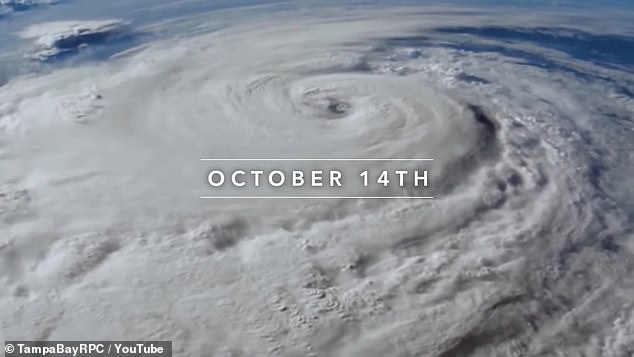A simulation meant to prepare Tampa for a devastating Category 5 hurricane turned out to be eerily similar to the path Milton is taking as it approaches Florida.
The Phoenix Project, released in 2020, combined simulated weather reports and archived video footage from other storms to emphasize the danger of a potential Category 5 hitting the area directly.
The simulated forecast said the hurricane would hit Tampa on October 15 in a worst-case scenario, with winds of 160 mph and wing gusts of up to 200 mph.
Although Hurricane Phoenix was fictional, the warnings have taken on prophetic meaning this week as the nightmare imagined by the Phoenix Project approaches in the form of the very real Hurricane Milton.
The Phoenix Project predicted that a Category 5 hurricane in Tampa would cause more than 160 deaths and 30,000 people missing, as well as 300,000 people seeking shelter and up to $200 billion in building damage.
The false forecast said the hurricane would hit Tampa on October 15 in a worst-case scenario: with winds of 160 mph and gusts of up to 200 mph.
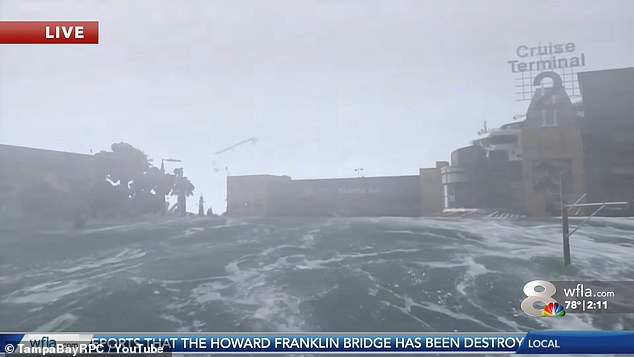
The terrifying scenes used in the simulation show the city center underwater, with cars and debris floating.
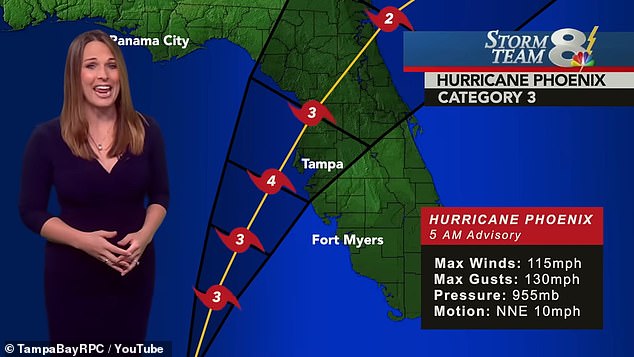
The images show simulated weather reports showing a monster hurricane approaching Tampa.
“The devastation in the region is almost unimaginable,” says the narrator.
The gruesome scenes used in the simulation show the city center underwater, with cars and debris floating.
All of the bridges are shown cut off by storm surge, which is said to reach up to 20 feet in some spots.
The simulation also shows medical staff saying that he is trapped on the third floor of Tampa General Hospital.
“St. Petersburg is essentially an island right now,” says an announcer as videos show houses with their roofs torn off by the wind.
The simulation concludes the next day, showing the devastation left by the storm, which destroyed the beaches, the hospital and most businesses and homes.
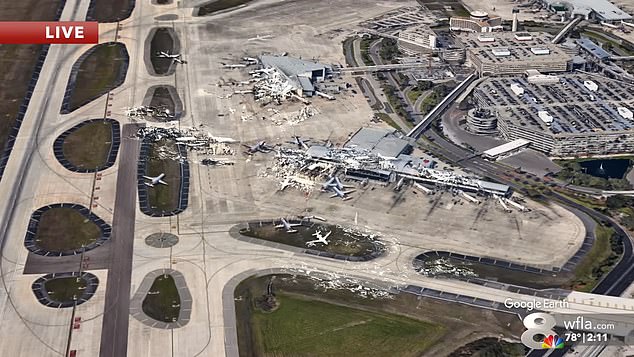
The video shows the devastation planned for the Tampa airport.
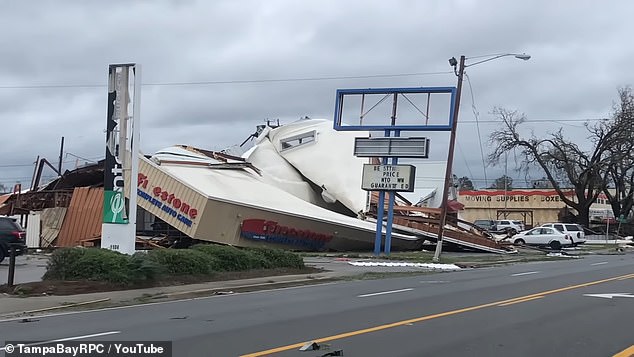
The simulation concludes the next day, showing the devastation left by the storm, which destroyed the beaches, the hospital and most businesses and homes.
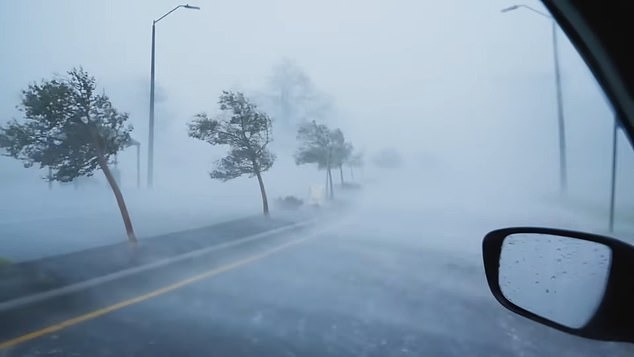
Trees are felled by monstrous hurricane winds in the images
Project Phoenix was sponsored by the Federal Emergency Management Agency (FEMA) and the Florida Department of Emergency Management with the goal of helping local officials prepare for devastating weather events.
The last time the eye of a major storm like Hurricane Milton hit Tampa Bay, in 1921, the city was a sleepy backwater of a few hundred thousand people. A century later, it is among the fastest growing metropolises in the United States, with more than 3 million inhabitants and highly vulnerable to flooding due to climate change.
As Milton moves toward Florida’s Gulf Coast, strengthening into a Category 5 storm on Monday, experts worry that a century of luck could suddenly come to an end.
The National Hurricane Center predicts storm surge in Tampa Bay and surrounding waters of 8 to 12 feet above normal tidal conditions, and rainfall of 4 to 6 inches due to Hurricane Milton.
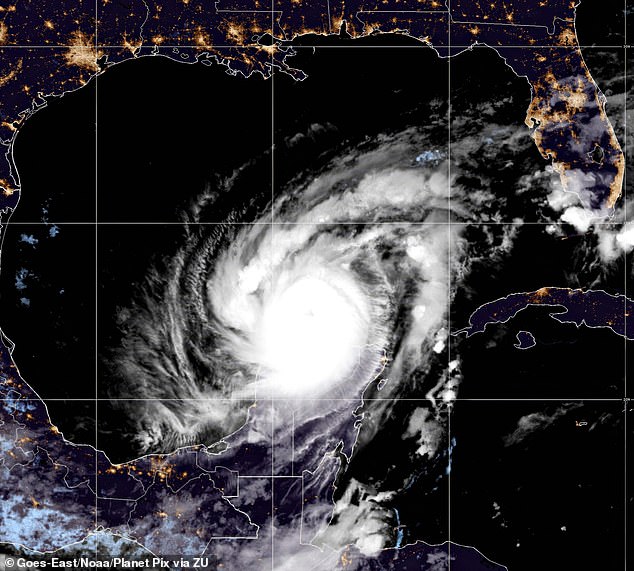
View of Hurricane Milton, currently a catastrophic Category 4 hurricane with 155 mph winds
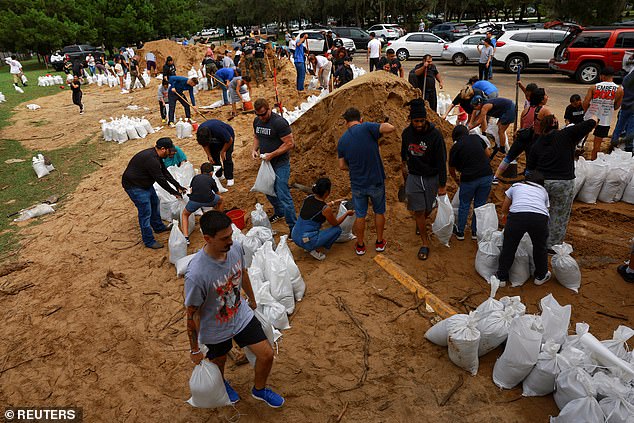
People prepare sandbags before Hurricane Milton arrives in Orlando
A 2015 report by Boston-based disaster modeling firm Karen Clark and Co. concluded that Tampa Bay is the most vulnerable place in the United States to flooding from storm surge caused by a hurricane and could lose 175 billion dollars in damages.
The increased risk is due in part to topography. Florida’s Gulf of Mexico coast is shallow and has a gentle, sloping shelf. The higher ocean floor acts as a barrier that holds back the flow of storm water, forcing the ocean to reach the coast.
That’s the opposite of Florida’s east coast, where the ocean floor suddenly drops just a few miles offshore.
MIT meteorology professor Kerry Emanuel said a hurricane in Tampa is the worst-case scenario for the “black swan” that experts have worried about for years.
‘It’s a huge population. “He’s very exposed, very inexperienced and that’s a losing proposition,” said Emanuel, who has studied hurricanes for 40 years.
“I always thought Tampa would be the city we would worry about the most.”


